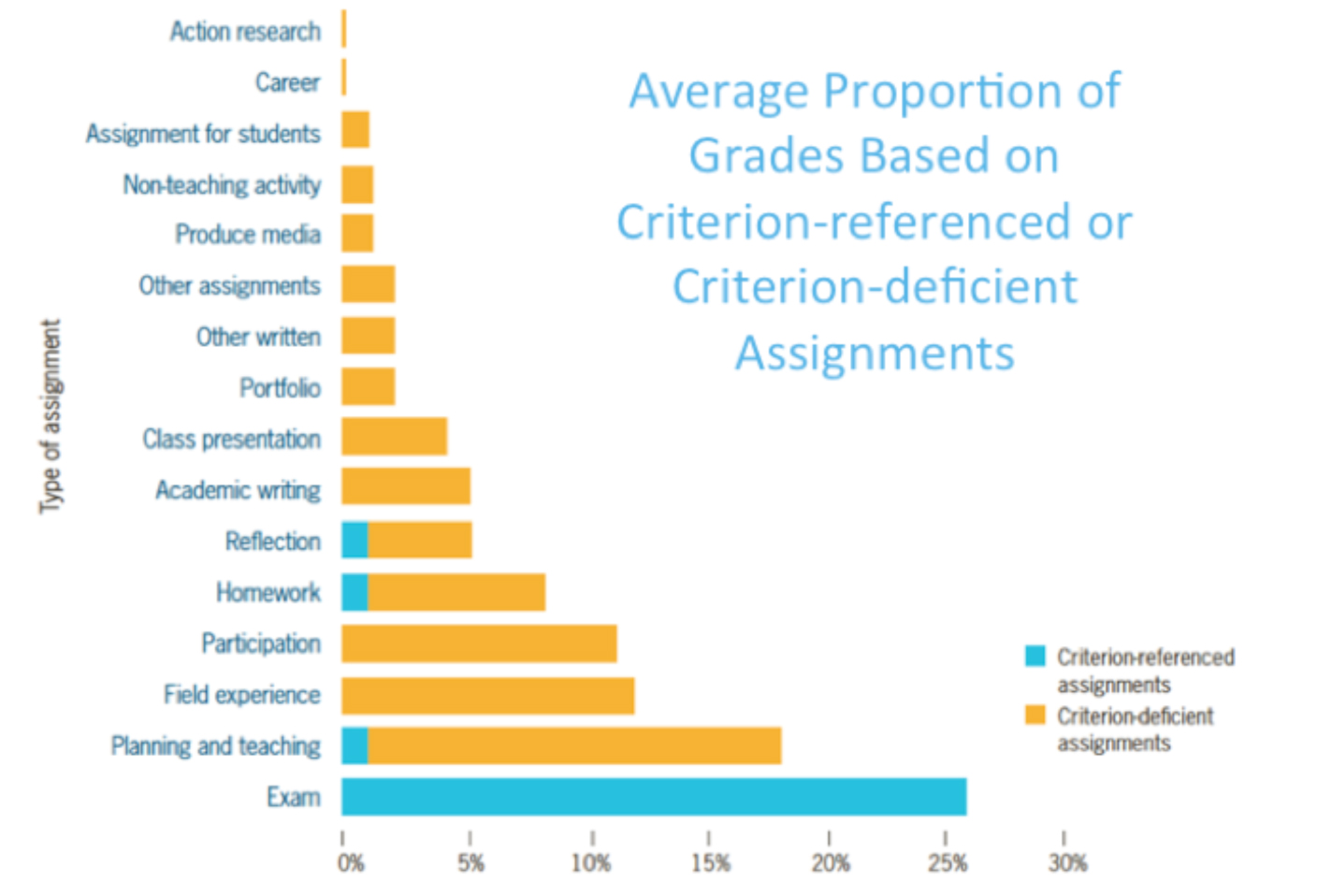Is Teacher Preparation Challenging Enough?
Why is this question important? The job of a teacher is challenging, requiring 1,000 to 1,500 critical teaching decisions a day (Good & Brophy, 2008). To be effective, a classroom teacher must be proficient in key domains including classroom management, instructional delivery, and student assessment. Despite the job's complexity, teaching has been characterized as an easy-entry occupation compared with other professions (Ingersoll, 2007). This view is evident in the easy grading in education departments, where students receive significantly higher grades than students who take classes in other academic departments (Koedel, 2011).
Other nations, which outperform America in international assessments, have taken a different route, placing greater emphasis on rigorous entry screening and a more demanding approach to teacher preparation (Ingersoll, 2007; Wang, Coleman, Coley, & Phelps, 2003).
It is worth noting the different approaches and the impact that a more demanding system could have on the quality of education in the United States.
See further discussion below.


Results: The Putman, Greenberg, and Walsh (2014) study had two major findings.
- The grading standards for candidates in 58% of the teacher preparation programs were much lower than for students in other departments on the same campus.
Only 30% of all graduating students in all departments earned honors while 44% of teacher candidates received this award. This represents a 14 percentage point disparity in favor of teacher candidates. Averaging the data disguises an even larger differential of at least 20 points for more than one quarter (28%) of the schools participating in the study. - There was a strong correlation between high grades and a lack of rigorous coursework.
In an attempt to identify why the coursework was not challenging, the study eliminated the following possible reasons: clinical coursework, which lends itself to high grades; too many arts and crafts assignments; too much group work; particularly flagrant grade inflation; better quality instruction; more female students, who tend to get higher grades; opportunities to revise work; and higher caliber students. After analyzing the syllabi across majors, the researchers found that the vast majority of assignments in teacher preparation programs could be classified as criterion-deficient assignments.
Criterion-deficient assignments may be based in knowledge or skills, but frequently they rely on "reflection assignments," which emphasize the student's opinions and experience—and thus are difficult to evaluate objectively. On average, criterion-deficient assignments were used more than twice as often in teacher education coursework as in other disciplines on campus (71% versus 34%).
This point is important because criterion-referenced assignments focus on clearly defined content that can be objectively evaluated by the instructor. This type of assignment tests a student against an established norm to determine if that student meets the criterion, thus allowing the instructor to provide substantive feedback. It also enables comparisons across students and evaluation of each student's mastery of the assignment.
Implications: Research reveals that teachers are the most powerful variable influencing student performance (Hattie, 2009). How teachers teach also plays a pivotal role in student success (Hattie, 2009; Wang, Haertel, & Walberg, 1997). Addressing the key problems in teacher preparation programs highlighted in the Wang, Coleman, et al. study—mainly, by setting higher admission standards for teacher preparation programs and committing to stricter grading through criterion-referenced coursework—offers tangible opportunities for school improvement. These are the approaches have allowed other nations to attract the best and the brightest to teaching careers.
Study Description: The study used evidence from education institutions that turn out nearly half of the nation's new teachers each year.
To establish the results for students being awarded honors, the study relied on commencement brochures to identify the percentage of students earning grade-based honors in different fields of study at 509 colleges and universities in the United States.
To examine the rigor of the coursework, the study looked at 1,161 courses offered by 33 institutions of higher learning. It examined 863 teacher preparation courses and 299 courses from other disciplines (e.g., business, psychology, history, nursing, economics, and biology). Approximately 7,500 assignments were coded as either "criterion-referenced" or "criterion-deficient." In the end, the study found sets of matching syllabi and grades for 449 courses across teacher preparation and other academic disciplines.
Citation:
Good, T., & Brophy, J. (2008). Looking into classrooms. Boston: Allyn & Bacon.
Hattie, J. (2009). Visible learning: A synthesis of over 800 meta-analyses related to achievement. New York: Routledge.
Ingersoll, R., (2007). A comparative study of teacher preparation and qualifications in six nations. Consortium for Policy Research in Education (CPRE) Policy Briefs. Retrieved November 13, 2014 from http://repository.upenn.edu/cgi/viewcontent.cgi?article=1145&context=gse_pubs.
Koedel, C. (2011). Grading standards in education departments at universities. Education Policy Analysis Archives, 19(23).
* Putman, H., Greenberg, J., & Walsh, K. (2014). Training our future teachers: Easy A's and what's behind them. Washington, DC: National Council on Teacher Quality. Retrieved November 13, 2014 from http://www.nctq.org/dmsStage/EasyAs.
Wang, A., Coleman, A., Coley, R., & Phelps, R. (2003). Preparing teachers around the world. Princeton, NJ: Educational Testing Service. Retrieved November 13, 2014 from http://www.ets.org/Media/Education_Topics/pdf/prepteach.pdf.
Wang, M. C., Haertel, G. D., & Walberg, H. J. (1997). What helps students learn? Spotlight on Student Success. Philadelphia, PA: Mid-Atlantic Laboratory for Student Success.
* study from which graph data were derived
